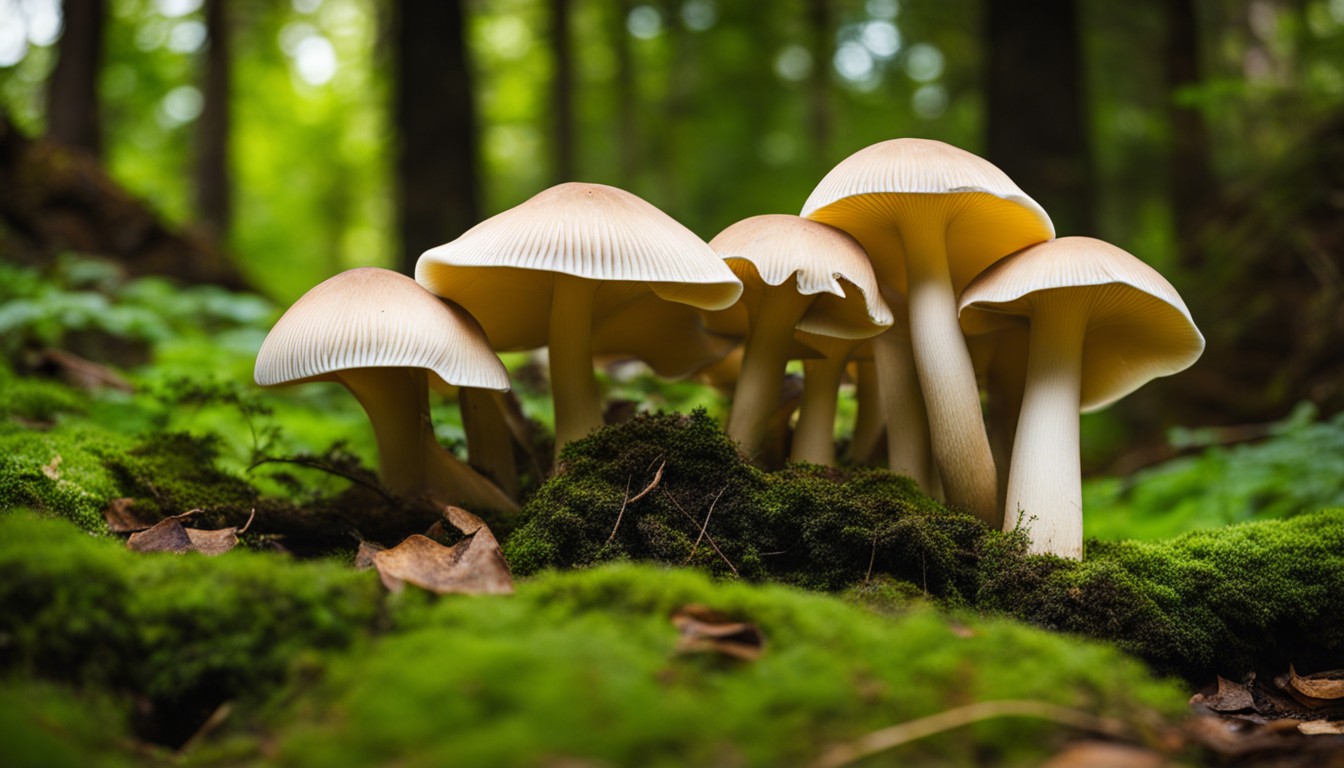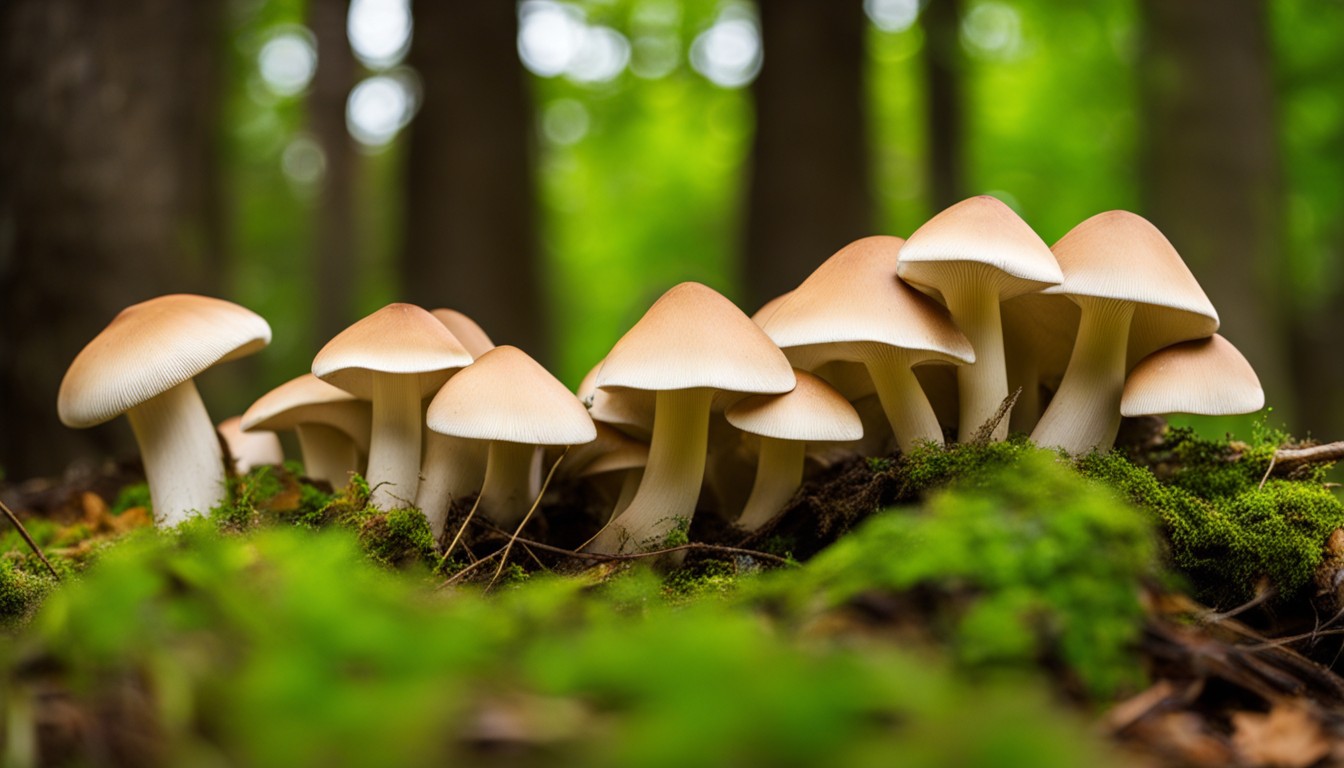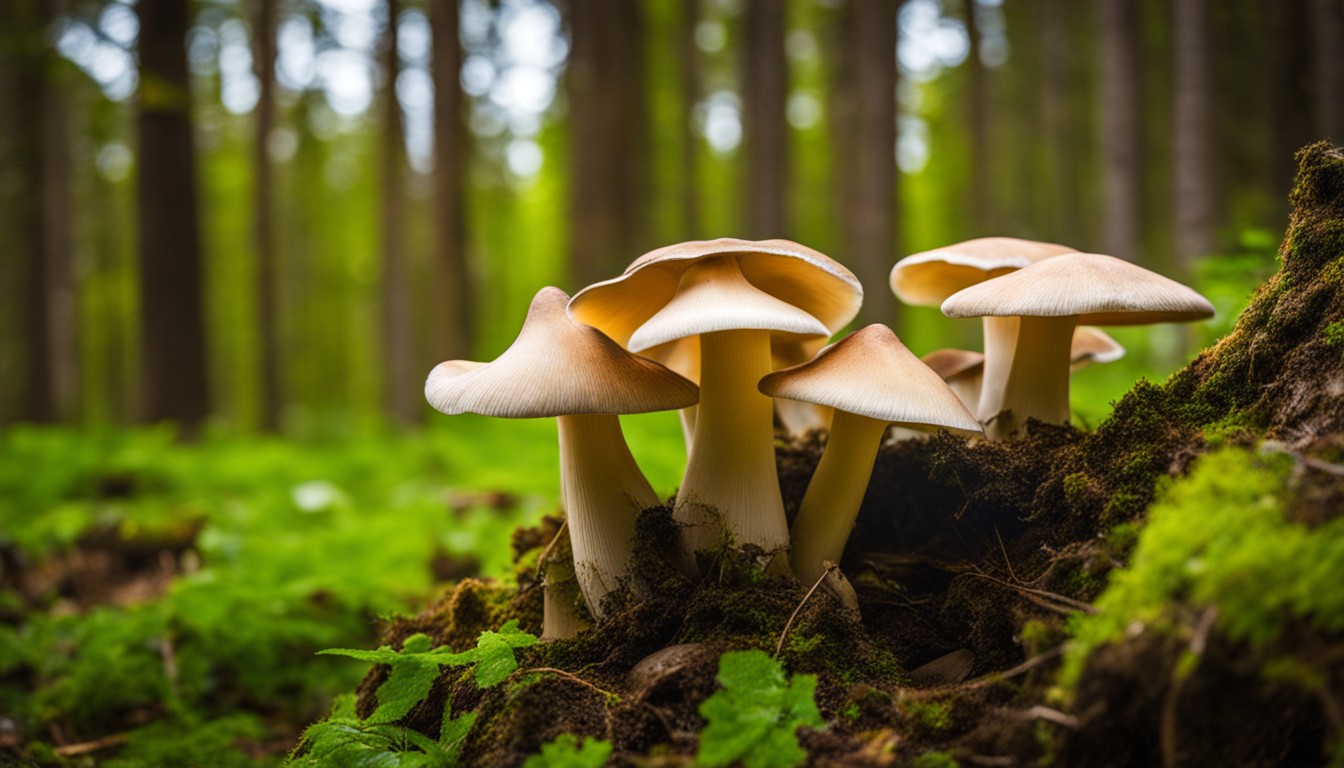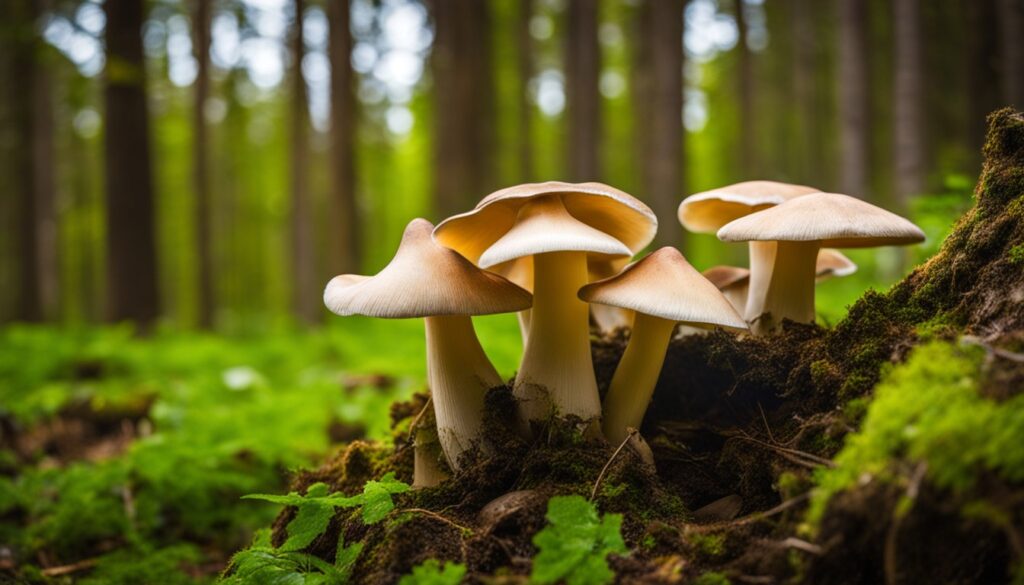Are you fascinated by the diverse world of mushrooms? Florida is home to a mesmerizing array of mushroom species, each with its own unique characteristics and ecological role. In this comprehensive blog post, we will delve into the captivating realm of mushrooms found in Florida, from the majestic Amanita bisporigera to the delicate Psilocybe cubensis. Join us on this botanical adventure as we uncover the hidden wonders of these fungi, their ecological importance, and the best places in Florida to spot them in their natural habitat.
The lush, humid forests of Florida provide the perfect environment for a wide variety of mushroom species to flourish. From the vibrant colors of the chanterelles to the mystical allure of the ghost fungus, every mushroom has a story to tell. We’ll explore the different ecosystems where these mushrooms can be found, from the towering oak hammocks to the shady cypress swamps. Along the way, we’ll discuss the important role that mushrooms play in nutrient cycling, decomposing organic matter, and even forming symbiotic relationships with other plants.
But our journey doesn’t end with identification and ecological significance. We’ll also delve into the diverse uses of mushrooms in cooking, medicine, and even artistic expression. Learn how to turn foraged mushrooms into delectable dishes that showcase their unique flavors and textures. Discover the medicinal properties of mushrooms and the potential health benefits they offer. And explore the fascinating world of mushroom art, where artists use fungi as their medium to create stunning and thought-provoking works.
So whether you’re a mycology enthusiast, a nature lover, or simply curious about the mesmerizing world of mushrooms, this blog post will be your ultimate guide to the captivating fungi of Florida. With our expertise and attention to detail, we aim to provide you with a comprehensive and engaging resource that will deepen your appreciation for these remarkable organisms. So grab your magnifying glass, put on your hiking boots, and get ready to embark on an enlightening journey through the enchanting realm of mushrooms in the Sunshine State.
The Diversity of Florida’s Mushrooms
Florida boasts a remarkable array of mushroom biodiversity, reflective of the state’s varying geographic ecosystems. From the common puffball to the alluring ghost fungus, the multiplicity of these fungal species paints a colorful picture in the natural tapestry of Florida.
Florida’s varied climate acts as a great catalyst in fueling the mushroom diversity. The state’s humid subtropical regions to the north and tropical monsoon climate to the south create an environment that cultivates a vast array of unique and diverse fungal species.
Introduction to Florida’s Mushroom Species
While the fascinating world of mushrooms remains largely unfamiliar to many, Florida opens doors to this captivating realm. The state’s diverse flora spawns a wide array of mushrooms, presenting a haven for mushroom enthusiasts and ecologists alike.
Florida, with its diverse flora, is a paradise hosting a wide array of mushroom species, contributing to its ecological richness and satisfying the curiosity of nature lovers and photographers.
Within the Fungal Kingdom, Florida nurtures an extensive variety of mushroom species, each carrying its distinguishing features. From the commonly spotted to the astoundingly rare, these mushroom species contribute to Florida’s ecological richness.
Getting to know Florida’s mushrooms not only gives insight into the state’s biodiversity but also fuel our curiosity about this often overlooked domain of nature. Delving into Florida’s mushrooms uncovers aspects of their life cycles, their roles in different ecosystems, and their interplay with the surrounding environment.
Mushrooms in Florida come in myriad forms and colors, each more intriguing than the next. Their enchanting forms lend themselves perfectly to photography, making mushroom spotting in Florida an exciting pursuit for nature photographers or those inclined towards botanical exploration.
Common Mushrooms Found in Florida
Florida, in its rich biodiversity, treats its residents and visitors consistently with a magnificent array of common mushroom varieties, often hidden in plain sight. The diverse palette of these fungi provides a beautiful spectacle for an everyday promenade along the green path. An understanding of their various types helps separate the edible from poisonous, a crucial knowledge for every mushroom enthusiast.
- The Amanita bisporigera, an all-white, potentially fatal mushroom when consumed
- The Amanita muscaria, a classic toadstool that’s red with white dots and is psychoactive
- The Lactarius indigo, a striking blue mushroom with milky latex
- The Bolete, a large group of mushrooms with sponge-like pores, several species edible
- The Chanterelle, well-known edible mushrooms that emanate an apricot-like aroma
- The Black Trumpet, a premium edible, considered as the ‘Poor Man’s Truffle’
- The Turkey Tail, a medicinal mushroom with definitive health benefits
Rare and Endangered Mushroom Species
Florida harbors a wealth of rare and endangered mushrooms, patches of hidden treasures beneath the foliage. Loss of such irreplaceable species could have far-reaching consequences, destabilizing ecosystems and unraveling nature’s intricate web.
- The Microglossum rufum: a flame-red beauty found nowhere else in the world
- The Psathyrella aquatica: an aquatic mushroom that embodies the unique biospheres of Florida
- The Amanita murrilliana: a rare sight in subtropical ecosystems
- The loss of spore dispersers: reduced biodiversity and altered decomposition processes
- Disruption of symbiotic relationships: trees and plants defying survival as their fungal partners vanish
- Increase in uncontrolled pests and diseases: an imbalance within the food web
Mushrooms as Medicinal Remedies
Florida’s rich diversity of mushrooms includes many species with known medicinal properties, offering traditional and modern remedies. From boosting immunity to slowing the aging process, these fungal wonders have been incorporated into a myriad of health and wellness therapies.
Scientific research continues in earnest to unlock the full potential of Florida’s medicinal mushrooms. Many native mushrooms are rich in bioactive compounds with the potential to revolutionize treatment for a range of medical conditions, attesting to the enduring power of nature’s pharmacy.
Habitats for Mushrooms in Florida

The rich biodiversity of Florida’s landscapes provides a myriad of habitats that support the flourishing mushroom kingdom. From verdant forests to thriving wetlands, these habitats play significant roles in the growth and development of an array of mushroom species.
The characteristics of specific habitats, like soil composition, humidity, and symbiosis with other living organisms, orchestrate the mushroom’s growth patterns. Understanding these habitat dynamics is key to unraveling the complexity of Florida’s mushrooms and their intriguing life cycles.
The Role of Forests in Mushroom Growth
Florida’s forests and mushrooms share a mutualistic relationship, with forests supplying mushrooms with organic matter necessary for growth, while mushrooms break down dead wood and leaf litter, recycling nutrients back into the soil. Both parties gain benefits, ensuring the health of the forest and the fungi.
Contributing factors within a forest – like microclimate, moisture levels, and type of organic matter – all play a significant role in mushroom growth. Variations in these aspects can lead to differences in mushroom species and their proliferation.
Notably, the presence of different types of trees affects the variety of mushrooms found in any forest. Certain mushroom species have a particular affinity towards specific tree species, making a diversified forest a prime location for numerous mushroom varieties.
Aside from providing protection from harsh weather conditions, forests also promote a stable environment, which is crucial for mushroom propagation. Dark, moist conditions underneath the forest canopy make an ideal habitat for mushrooms to grow and thrive.
Wetlands and Mushrooms: A Unique Relationship
The intricate network of Florida’s wetlands forms a fertile ecosystem for an array of mushroom species. These swampy terrains, brimming with biological diversity, act as a mushroom haven with their moist and nutrient-rich soils.
Notably, the unique hydrological conditions of these aquatic habitats foster a variety of fungal species. A delicate balance of water, heat, and organic substrate fuels mushroom growth, creating a captivating spectacle at ground level.
Remarkably, the wetlands also amplify the biological diversity of mushrooms. The uninterrupted water supply and organic matter decomposing forms an ideal environment for various mushroom species to proliferate.
Reinforcing this fecundity, the rich biodiversity of the wetlands also buttresses mushroom resilience. With myriad plant species sharing the habitat, mushrooms have plentiful substrates and flourish in harmony with their environment.
Mushrooms in Urban Environments
Urban environments present an unlikely stage for fungal wonders, yet the metropolitan landscape of Florida hosts a captivating variety of mushrooms. In an intoxicating juxtaposition of natural and constructed habitats, these organisms have made their mark.
Surviving and thriving in the concrete jungle is not a task for the faint-hearted. Remarkably, a multitude of mushroom species in Florida effortlessly conquer this challenge, leveraging the unique conditions presented by human development.
The diversity of these urban-adapted fungi is awe-inspiring and challenges one’s perception of fungi as strictly forest dwellers. A simple walk downtown could become an impromptu mycological tour.
These metropolitan mushrooms champion the mantra of adaptation, opportunistic in their strategy, exploiting cracks in pavement, decomposing wood, and landscaped areas to sprout and spread.
Such remarkable coexistence between fungi and urban life redefines the term ‘urban jungle’, blending elements of the natural and constructed world in a beautiful, synergistic relationship.
Foraging for Mushrooms in Florida

As the allure of foraging mushrooms in Florida increases, understanding its do’s and don’ts becomes crucial. Foragers must always carry a regional guidebook for accurate identification, ensure the specimens are unspoiled, and never ingest a mushroom without certainty of its edibility.
Mastering the art of identifying edible mushrooms during Florida foraging experiences is akin to unraveling a mystic science. Fungal diversity is vast; the checker, pink tip, and indigo milkcap are recognizable but a keen eye and knowledge are necessary to discern the edible from the toxic.
Safety Precautions for Mushroom Foraging
Ensuring safety during mushroom foraging in Florida requires acknowledging the risk factors and being prepared with adequate precautions against potential hazards. Overlooking proper measures could result in health issues, including allergic reactions or worse.
- Familiarize yourself with the different species of mushrooms in Florida, both edible and poisonous.
- Carry a field guide with illustrated pictures for accurate identification.
- Always wear protective clothing to shield yourself from ticks, spiders, and poisonous plants.
- Never consume a wild mushroom without being 100% sure of its identity.
- Carry a first-aid kit to treat unexpected injuries during foraging.
- Participate in local mycology groups for hands-on learning experiences about mushroom foraging.
Best Locations for Mushroom Foraging in Florida
Florida, with its diverse ecosystems, offers numerous locations ideal for mushroom foraging. Whether you’re a novice or an expert in mycology, the state has plenty to offer.
- Ocala National Forest: Known for varieties of boletes and chanterelles.
- Everglades National Park: Home to a plethora of psilocybe species.
- Paynes Prairie Preserve State Park: Abundance of edible mushrooms.
- Apalachicola National Forest: Famous for its wild morels.
- Big Cypress National Preserve: Find strains of oyster mushrooms here.
Seasonal Variations in Mushroom Foraging
In Florida’s fungal world, each season paints a different picture. The summer brings out bright, bold species, while the cooler months invite the subtler, earth-toned varieties to emerge, enriching the foraging experience.
Charting the circadian rhythm of mushrooms, we see distinct peak growth periods. During the humid, rainy seasons, mushrooms in Florida proliferate, marking the best time for an adventurous excursion into nature’s larder.
Local Regulations and Permits for Mushroom Foraging
Before stepping foot into Florida forests to forage, being well-versed with state and local regulations is necessary. Foraging for personal consumption is generally accepted but commercial mushroom picking is strictly regulated.
A mushroom forager stepping into state parks or private lands must secure necessary permits. Violation of these rules may result in heavy fines or even imprisonment.
Local regulations may vary, so it’s wise to check with local authorities or park management. Specialized foraging classes or regional foraging groups provide relevant legal information.
Recognize that regulations are there to protect unique ecosystems and biodiversity. Irresponsible foraging practices could lead to depletion of rare mushroom species and disturbs wildlife habitats.
Finally, good foragers not only benefit themselves but contribute to the preservation of the environment. Following rules ensures sustainable practices, maintains this lucrative hobby and respects the interconnected nature of our ecosystems.
Mushroom Photography Tips for Amateurs

When capturing the fungal majesty of Florida, a keen understanding of the interplay between light, composition, and timing prove essential. Approaching the subject with a level of respect, acknowledging the mushroom’s intricate details, creates images that relay more than just aesthetic appeal.
In the realm of mushroom photography, highlights are in honing focus to capture the spore-bearing fruiting body in immaculate detail. Fundamental skills in repose, framing, and macro techniques paired with a depth of patience, sets the digital stage for your fungal masterpiece.
Essential Equipment for Mushroom Photography
A good camera is vital to effectively capturing the intricate details of Florida’s mushrooms. As important are using macro lenses that enable extreme close-ups, revealing textures and colors otherwise unnoticed. A sturdy tripod is equally crucial, preventing shaky images and allowing optimal aperture settings.
The use of lighting equipment, such as an external flash and diffuser, can significantly enhance the depth and detail of the captured image. They can appropriately illuminate the fungi regardless of ambient light conditions, ensuring consistent quality shots through the day.
Don’t dismiss the importance of small tools like a kneeling pad for comfortable ground-level shots and a reflector to redirect natural light. While capture is important, post-processing software should not be overlooked. It can elevate your photos, accentuating features and correcting minor imperfections.
Tips for Capturing Mushrooms in their Natural Habitat
When photographing Florida’s mushrooms, there’s more than meets the eye. Optimal use of shadow and light techniques in the state’s diverse landscapes can illuminate their intricate details, enhancing their natural beauty.
Showcasing the vibrant life of mycelium often requires a fresh perspective. Experimentation with angles, focus points, and depth of field can lead to mesmerizing results when capturing wild mushrooms.
Consider the larger environment around each specimen. Highlighting their symbiotic relationships with local flora and fauna can lead to a more comprehensive, captivating image of Florida’s fungal wonders.
Editing and Post-processing Techniques for Mushroom Photos
Blending modes and enhancing tools in post-production software can truly transform your mushroom photos. Play with layer opacity, color curves, and levels to inject depth and richness into your images, turning a good photo into a great one.
One should also consider selective editing to highlight the beauty of Florida’s mushrooms. This means adjusting the exposure or saturation of certain spots in the photo, drawing the eye to the fungi’s unique shapes and colors.
Experimentation should not be feared; instead, embrace it as part of the creative process. Play with color grading, cloning, and post-cropping vignetting to bring the mushroom and its environment to life.
Remember, the goal of editing is to enhance the photo, not redefine it. Ensure that your mushroom photos still feel real and authentic, amplifying the beauty of the fungal realm present across Florida rather than creating a paradoxical image.
Frequently Asked Questions
Introduction: Here are some commonly asked questions about mushrooms in Florida and their exploration.
1. What types of mushrooms can be found in Florida?
Florida is home to a diverse range of mushroom species, including the majestic Amanita bisporigera, delicious chanterelles, and the intriguing Psilocybe cubensis.
2. Where can I find mushrooms in Florida?
Mushrooms can be found throughout Florida’s lush forests, with popular locations including oak hammocks, cypress swamps, and other shaded areas abundant in organic matter.
3. Are there any poisonous mushrooms in Florida?
Yes, there are poisonous mushrooms in Florida, such as the deadly Amanita bisporigera. It’s crucial to exercise caution and never consume any wild mushroom without proper identification.
4. How can I identify mushrooms in Florida?
Proper identification of mushrooms is essential to ensure safety. It is recommended to consult field guides, seek guidance from experienced mycologists, or join local mushroom clubs for assistance with identification.
5. Can I forage for mushrooms in Florida?
Yes, foraging for mushrooms is a popular activity in Florida. However, it’s important to follow ethical foraging practices, respect private property, and obtain any necessary permits or permissions.
6. Are there any culinary or medicinal uses for mushrooms in Florida?
Absolutely! Many edible mushrooms found in Florida, such as chanterelles, can be incorporated into delicious recipes. Additionally, certain mushrooms have medicinal properties and are used in alternative medicine practices.
7. Are there any guided mushroom tours or events in Florida?
Yes, there are guided mushroom tours and events available in Florida, organized by local experts, mycology clubs, and nature centers. These provide opportunities to learn about mushroom identification, ecology, and safe foraging practices.
8. How can I get involved in mushroom research or conservation efforts in Florida?
To get involved in mushroom research or conservation efforts, consider joining local mycology organizations, participating in citizen science projects, or volunteering with nature conservation groups in Florida.
Remember, always prioritize safety and caution when exploring the fascinating world of mushrooms in Florida.
Conclusion
Summing up the mycological exploration, Florida’s biodiversity is truly mirrored in its versatile and fascinating fungi. The journey’s awe-inspiring finds illustrate the state’s fungal wonders, from common to rare species, diverse habitats to foraging locations. Closing notes on the captured, photographic treasures of Florida’s fungi underscore the innate beauty of these often-overlooked organic wonders.
- Facts about common to rare mushroom species
- Overview of diverse mushroom habitats
- Guide to safe mushroom foraging in Florida
- Insights into local foraging regulations and permits
- Essential mushroom photography tips and equipment

